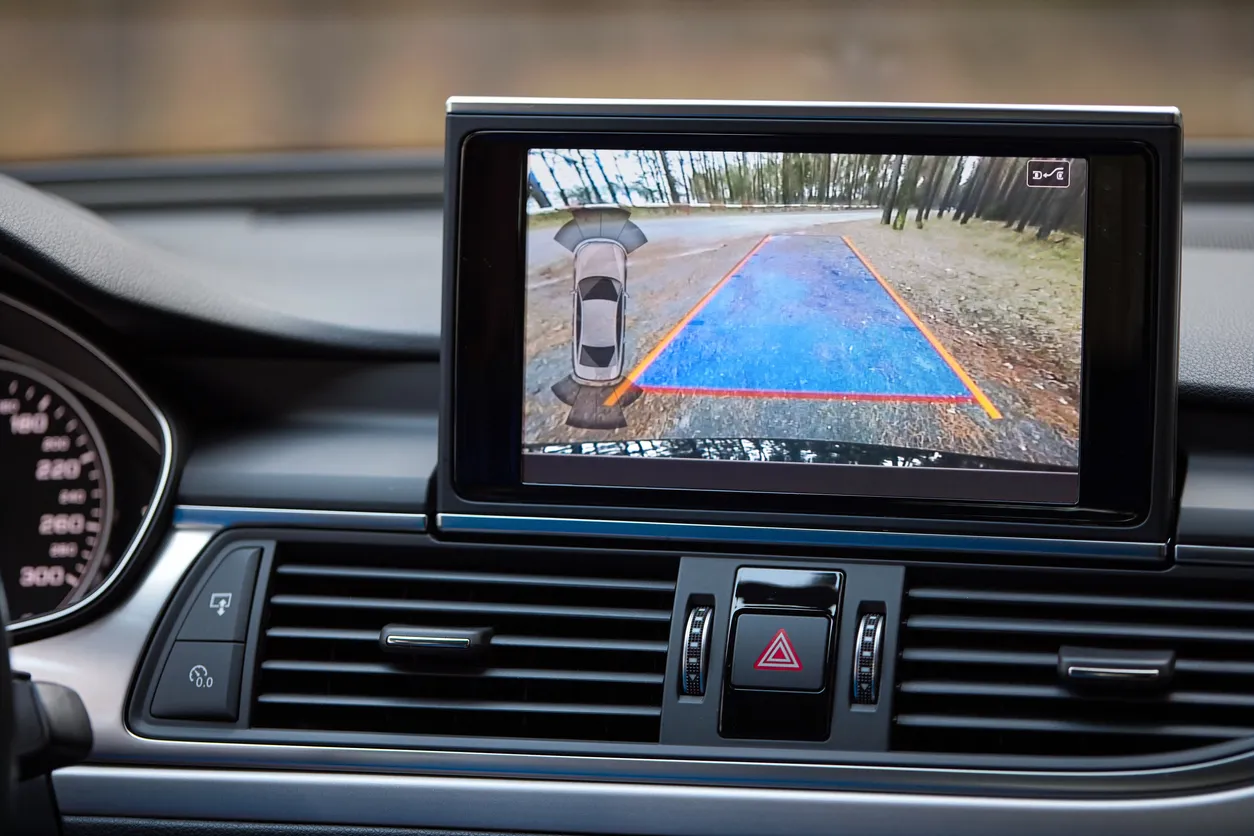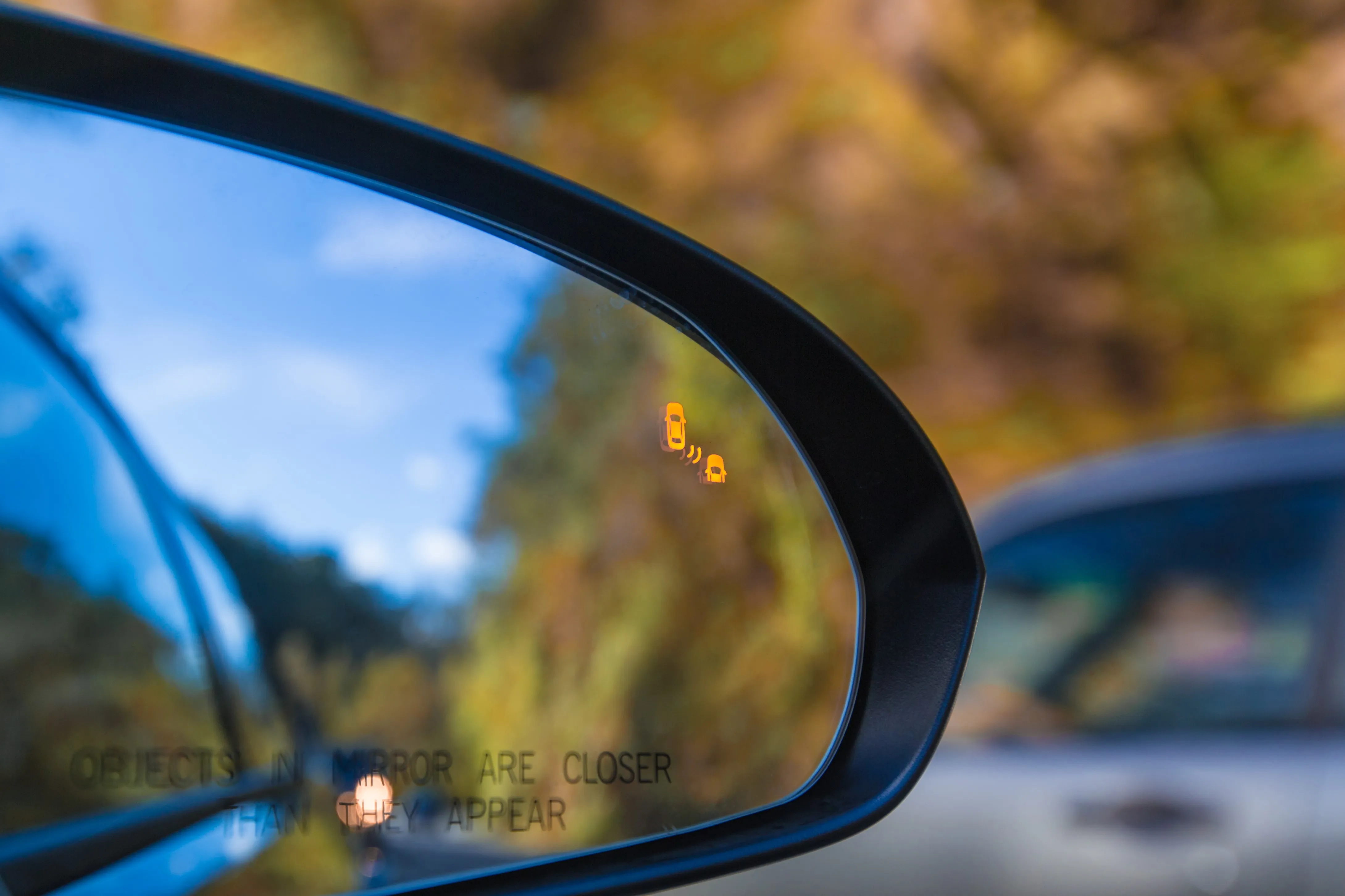- Rear Cross-Traffic Alert: What Is It and How Does It Work?
- What Is a Rear Cross Traffic Alert?
- How Does Cross Traffic Alert Work?
- How To Use Rear-Cross Traffic Alert Effectively
- Modern Vehicles Often Have This Technology
- Rear Cross-Traffic Alert VS Blind Spot Monitoring
- Enhance Safe Driving with Rear Cross-Traffic Alerts
Rear Cross-Traffic Alert: What Is It and How Does It Work?

If your vehicle comes equipped with a rear cross-traffic alert, it's designed to help you remain safer when backing out of parking spaces. This advanced technology serves as a second set of eyes as you back your vehicle out of the parking lot. It warns you about oncoming obstacles and helps you make the right decisions as you reverse your vehicle. These systems aren't perfect and aren't available on all vehicles yet, but if you have rear cross-traffic alert, you should understand how it works so you can stay safer because of it.
What Is a Rear Cross Traffic Alert?
A rear cross-traffic alert is a series of sensors that detect vehicles approaching from the left or the right as you back up. If you're backing out of a parking space, it can be difficult to see when vehicles are driving in your direction. This system gives you a warning before you can see the vehicles yourself. While using this technology, you should still drive cautiously and attempt to see all around your vehicle. Still, when used properly, you will be safer backing out of parking spaces than if you didn't have a cross traffic alert installed on your vehicle.
How Does Cross Traffic Alert Work?
In the same way that blind spot monitoring systems work, rear cross-traffic alert relies on radar sensors that can sense motion around your vehicle. These systems can see when cars are approaching you from different directions, and the sensors relay that information to your vehicle's computer to help keep you informed. After the cross traffic alert detects a vehicle approaching from the left or right, the computer interprets that information and warns you. The warning will likely be a small beep, a vibration, or a light. The warnings on these systems are designed to tell you what direction a vehicle is approaching so you have as much information as possible as fast as possible.
How To Use Rear-Cross Traffic Alert Effectively
You must slowly back out of parking spaces to stay safer with rear cross-traffic alerts. Give the system time to warn you about traffic, and respond to that warning by stopping or moving forward into the parking space again. If you move your vehicle slowly, you can keep yourself in a safe location when traffic puts you at risk. Allow the cross traffic alert to work as it should, and you won't have as many issues backing out safely anymore. There will almost always be a vehicle in your blind spot; let this warning system inform you of those issues in time for you to do something about it.
Modern Vehicles Often Have This Technology
These advanced warning systems are typically offered on the same vehicles that have blind spot monitoring, even though these technologies are different. If you want a vehicle with advanced sensors that enable features like rear cross-traffic alerts, you should get a new vehicle with upgraded feature packages. Most new luxury vehicles come equipped with this technology, and some consumer-grade vehicles also come with this technology if you get upgraded sensor and safety packages. Talk with your local dealer about what safety features are available with new vehicles, and opt for a model equipped with the sensors and safety systems that will keep you safest as you drive.
Rear Cross-Traffic Alert VS Blind Spot Monitoring
 Most vehicles equipped with rear cross-traffic alerts also come with blind-spot monitoring alerts. These two features rely on the same or similar sensors but are different. Rear cross-traffic alert informs you of vehicles approaching from the left or right when you're backing up. These systems only function when your vehicle is in reverse, and they're designed to detect vehicles moving toward the sides of your car. Blind spot monitoring systems watch for drivers as you prepare to change lanes.
Most vehicles equipped with rear cross-traffic alerts also come with blind-spot monitoring alerts. These two features rely on the same or similar sensors but are different. Rear cross-traffic alert informs you of vehicles approaching from the left or right when you're backing up. These systems only function when your vehicle is in reverse, and they're designed to detect vehicles moving toward the sides of your car. Blind spot monitoring systems watch for drivers as you prepare to change lanes.
These systems use sensors to detect when vehicles are driving in the same direction as you on the side of your ride. They look for cars in your blind spots at the sides of you and indicate their presence with lights, beeps, or vibrations. Both systems use radar or LIDAR sensors to detect vehicles approaching you in a dangerous location, but they are looking for different issues and are meant for different driving situations. It's best to get a vehicle that offers rear cross-traffic alerts and blind spot monitoring features if possible.
Can You Get These Features on Used Vehicles?
While these sensors are mostly available on newer vehicles sold today, it is possible to get advanced safety features on older vehicles, too. You will have to look at used luxury cars or spend time researching standard vehicles that have safety monitors and sensors sooner. Be aware that an older vehicle will often have a less effective set of sensors than a new vehicle because technology improves over time.
However, knowing the safety features offered on any vehicle you intend to purchase will help you remain safer overall. Check the list of features for a specific year, model, and trim package of the vehicle you want to buy. Also, look at the vehicle's history report to verify that you're getting something that was maintained properly and avoiding a vehicle being involved in a serious accident. If you take your time and research carefully, you can get a vehicle that performs well in most driving conditions and that you can rely on to keep you safe.
Enhance Safe Driving with Rear Cross-Traffic Alerts
Rear cross-traffic alert sound fancy, but they're simple when you understand the technology and how they can change your driving patterns. Use this safety feature to help you stay safe in parking lots and avoid more accidents overall. Modern safety features can improve the way we drive today, and rear cross-traffic alert, along with blind spot monitoring, are two more features that help eliminate dangerous driving situations we encounter regularly. Each of these systems can be misused, so it's important to learn how to utilize the technology effectively to stay safer as you drive.
- Rear Cross-Traffic Alert: What Is It and How Does It Work?
- What Is a Rear Cross Traffic Alert?
- How Does Cross Traffic Alert Work?
- How To Use Rear-Cross Traffic Alert Effectively
- Modern Vehicles Often Have This Technology
- Rear Cross-Traffic Alert VS Blind Spot Monitoring
- Enhance Safe Driving with Rear Cross-Traffic Alerts
FREE Vehicle Search
- Accidents
- Problem Checks
- Title Records
- Recalls
- Values
- Specs
-
InfoPay, Inc. (dba GoodCar) is an Approved NMVTIS Data Provider
-
-












































